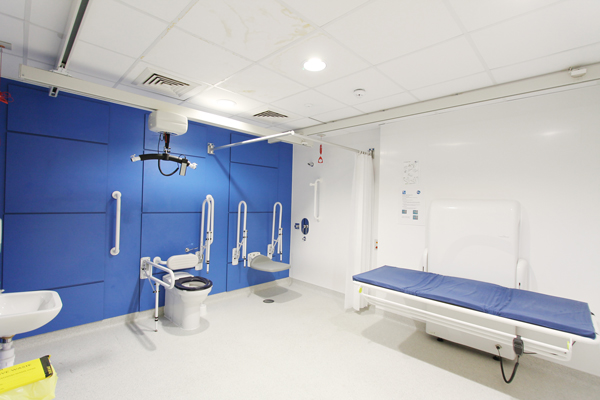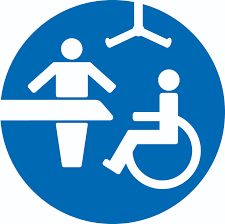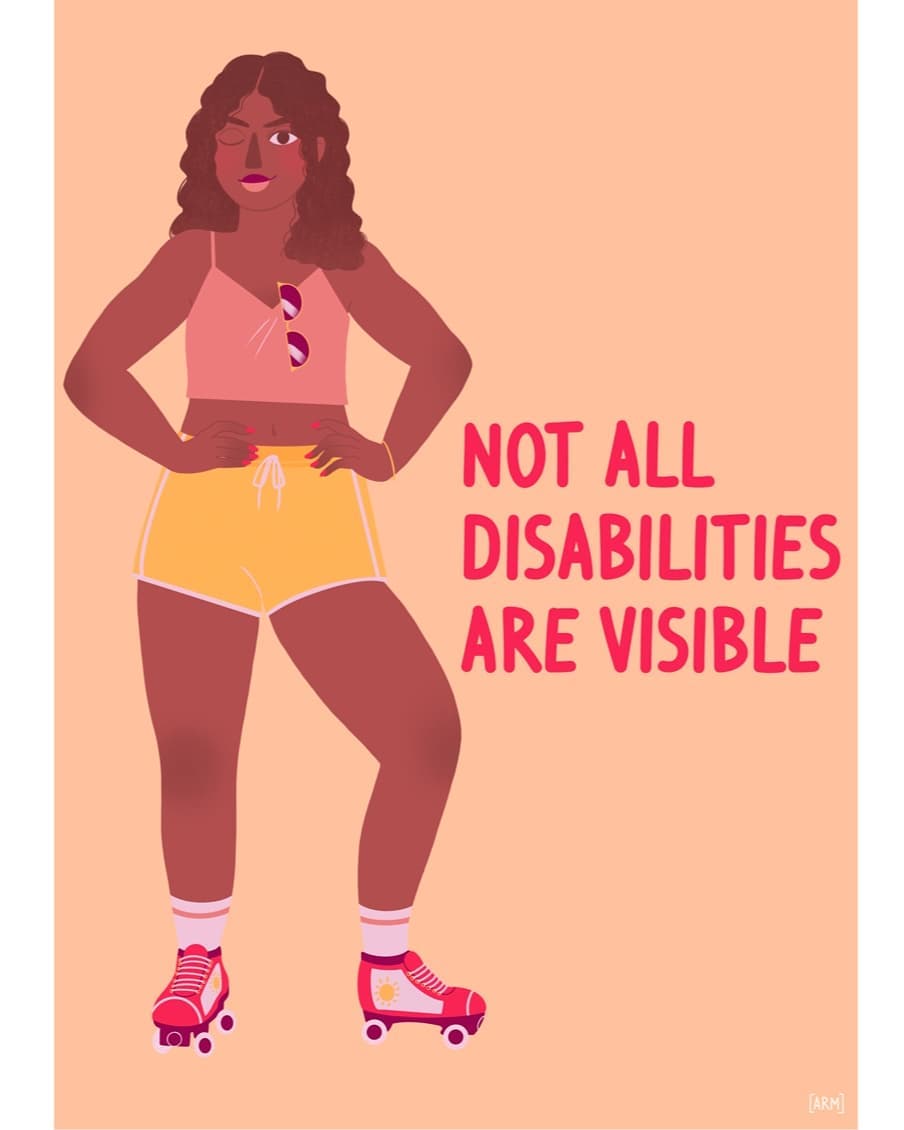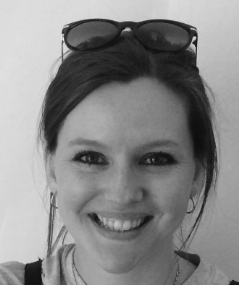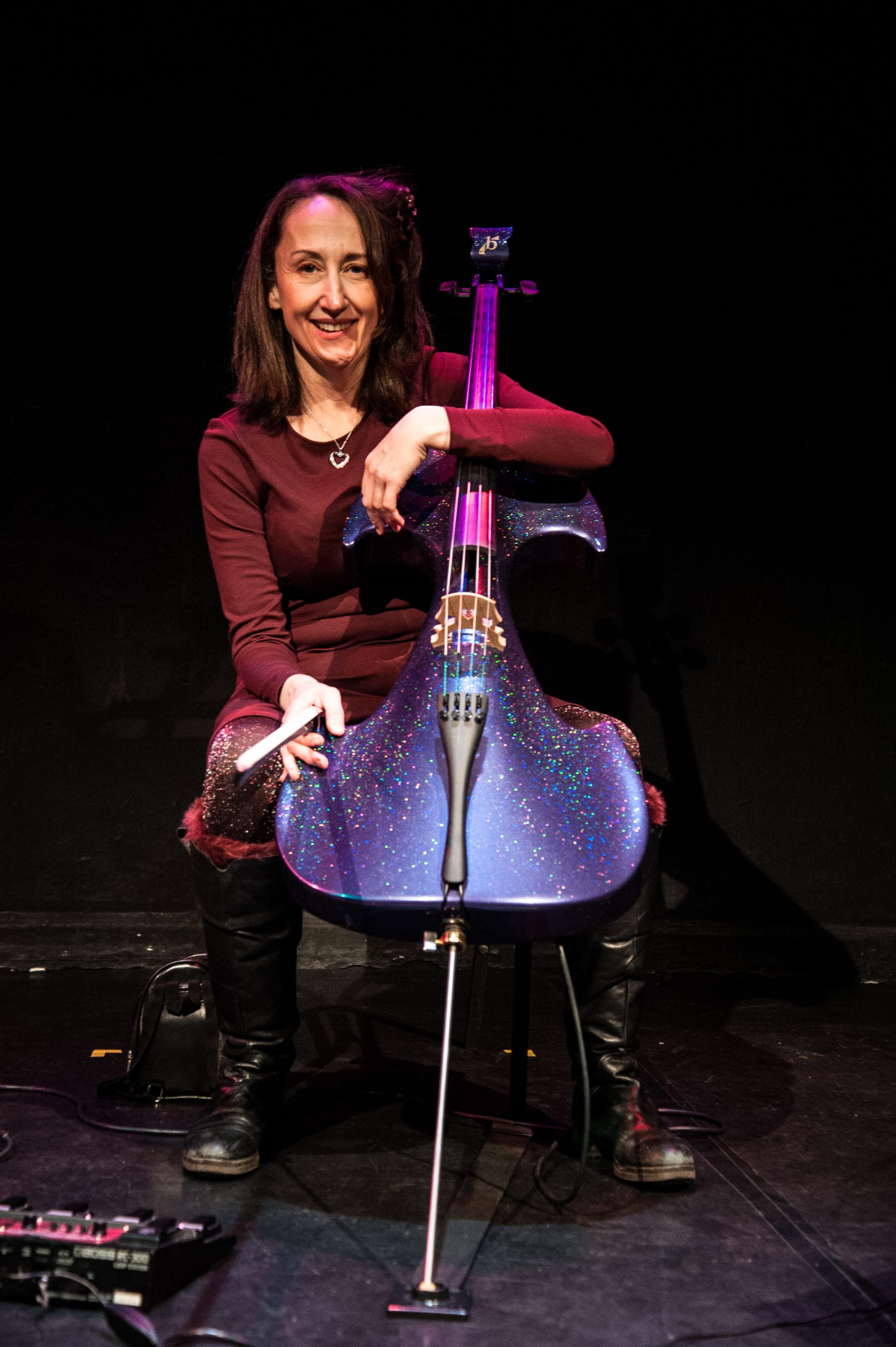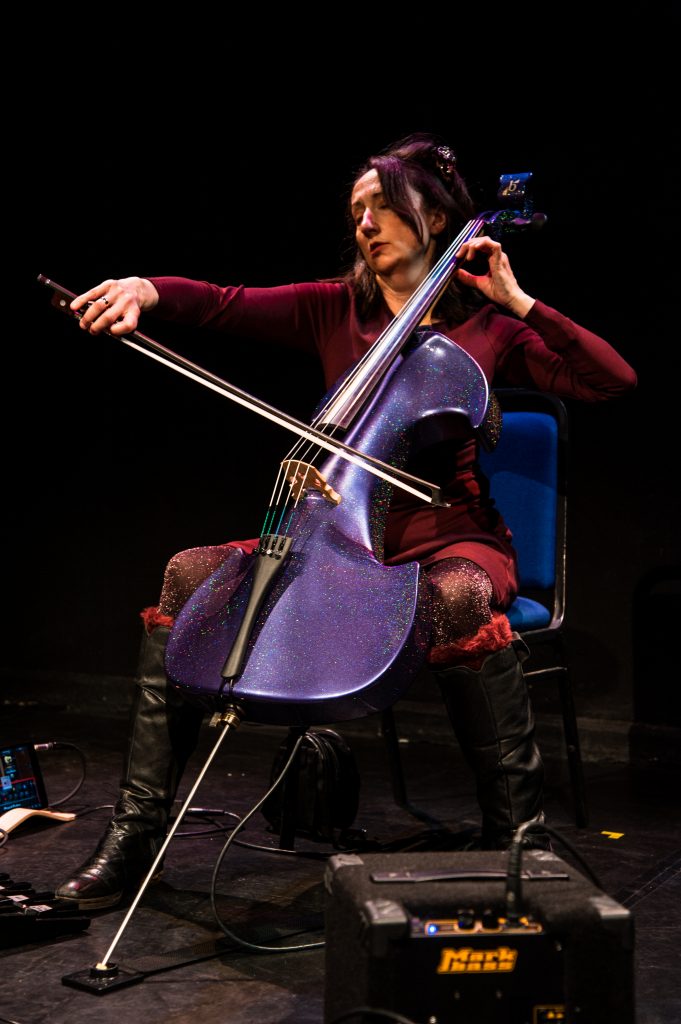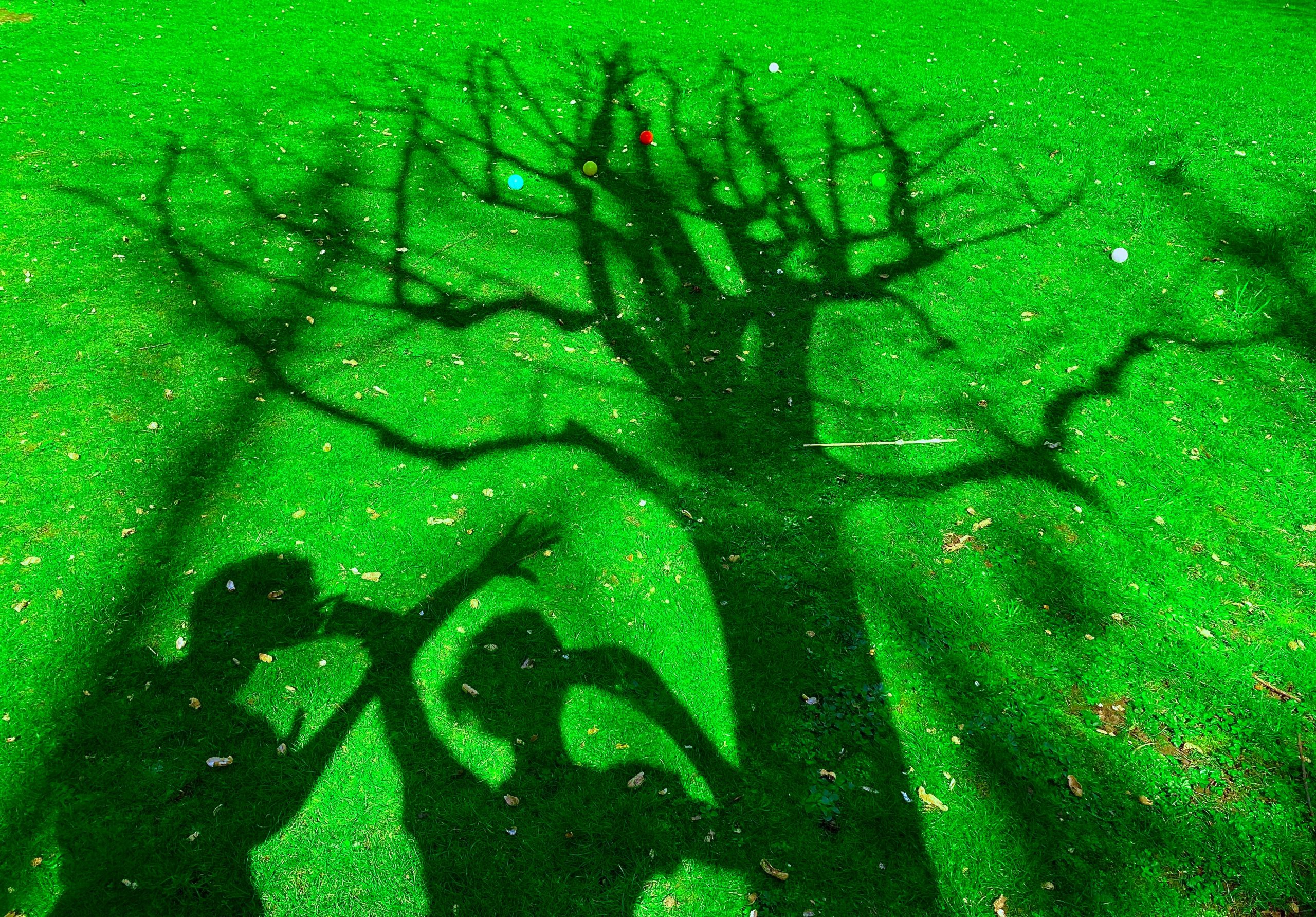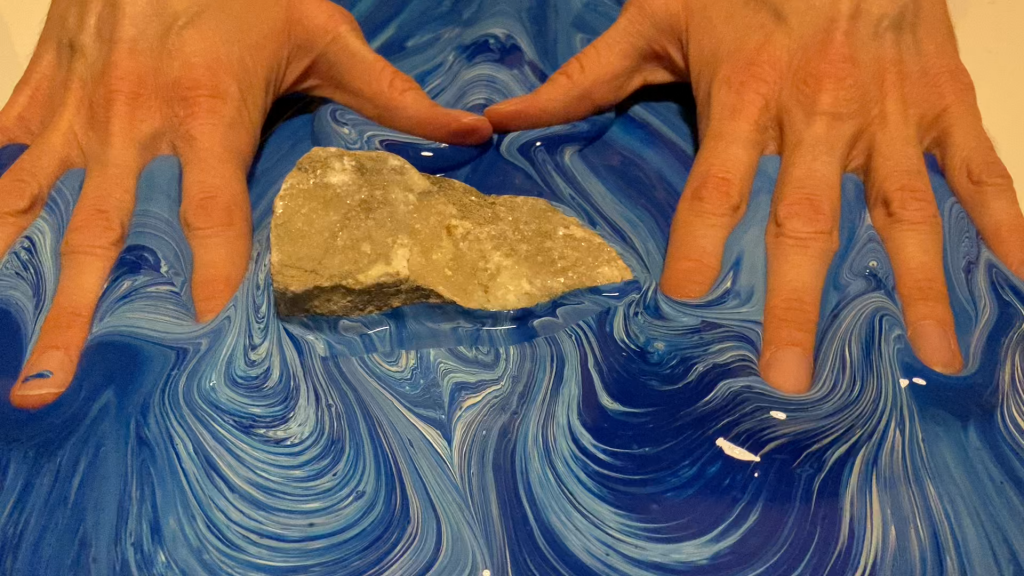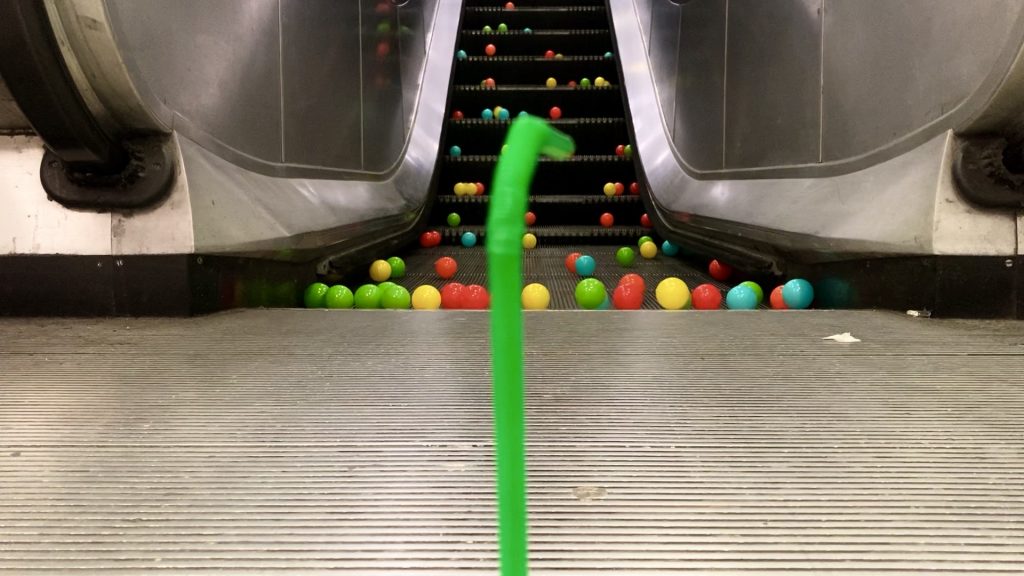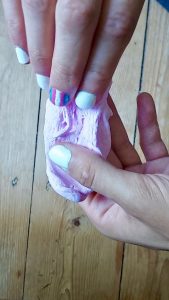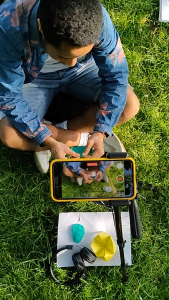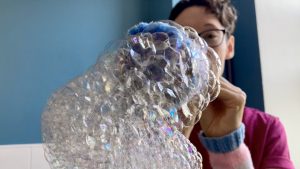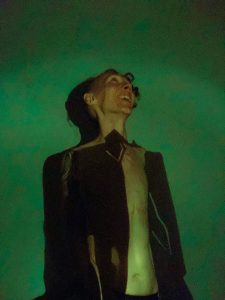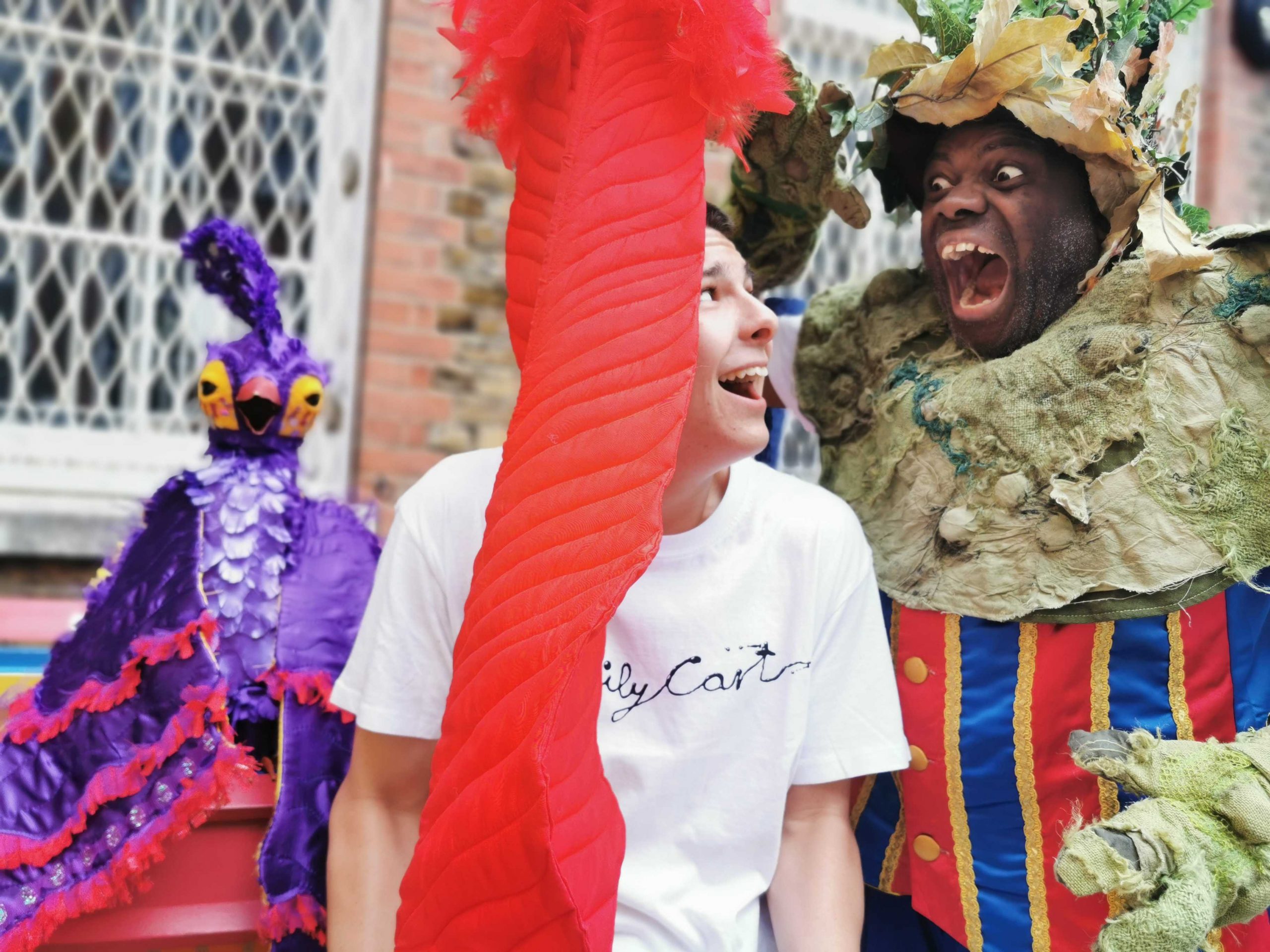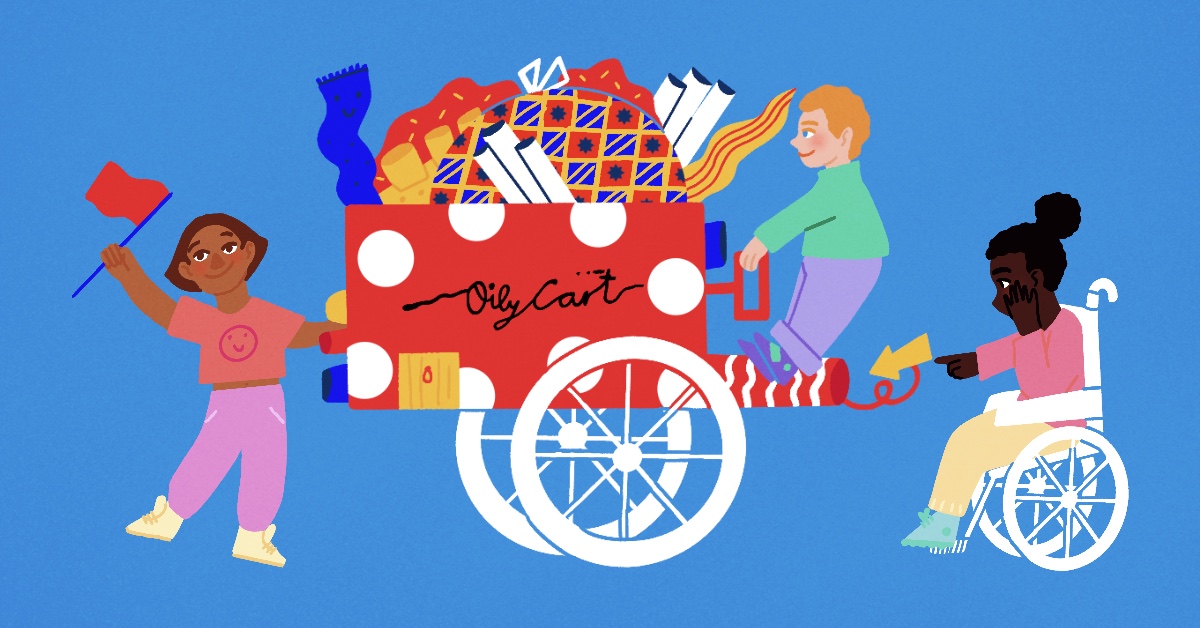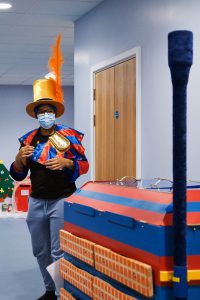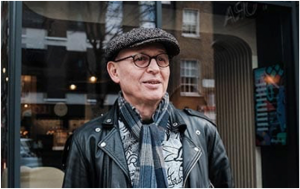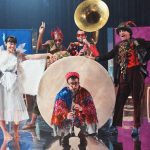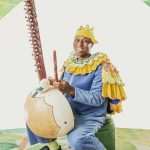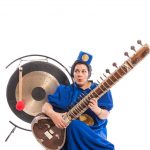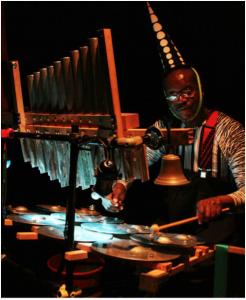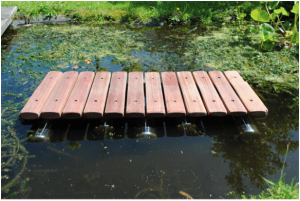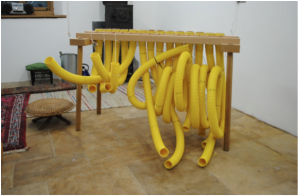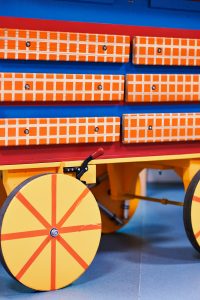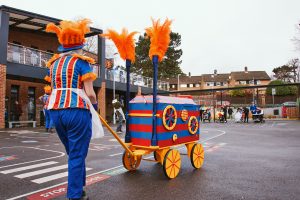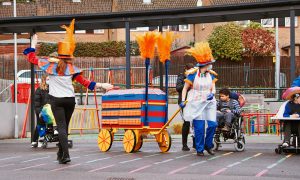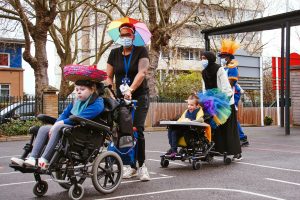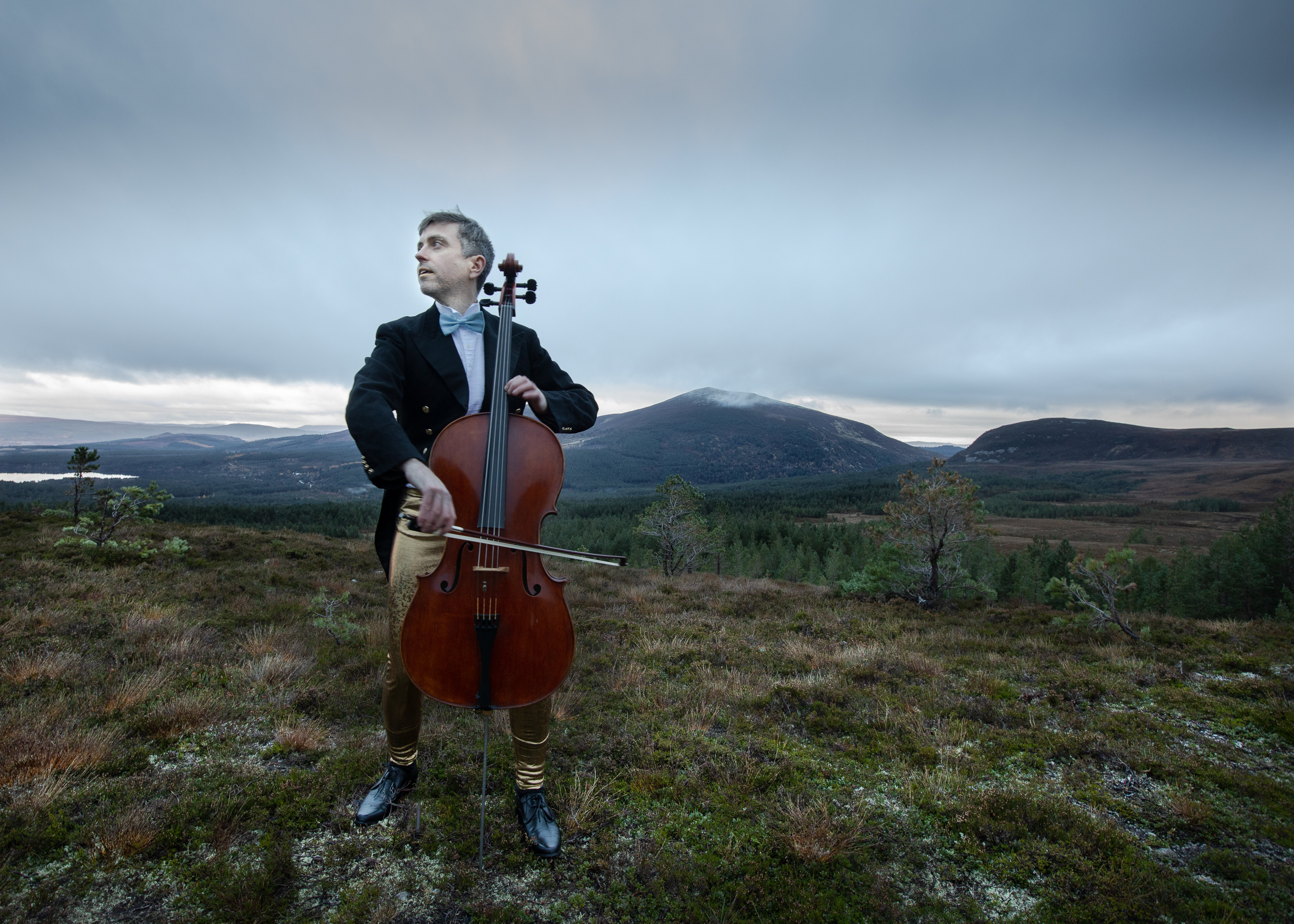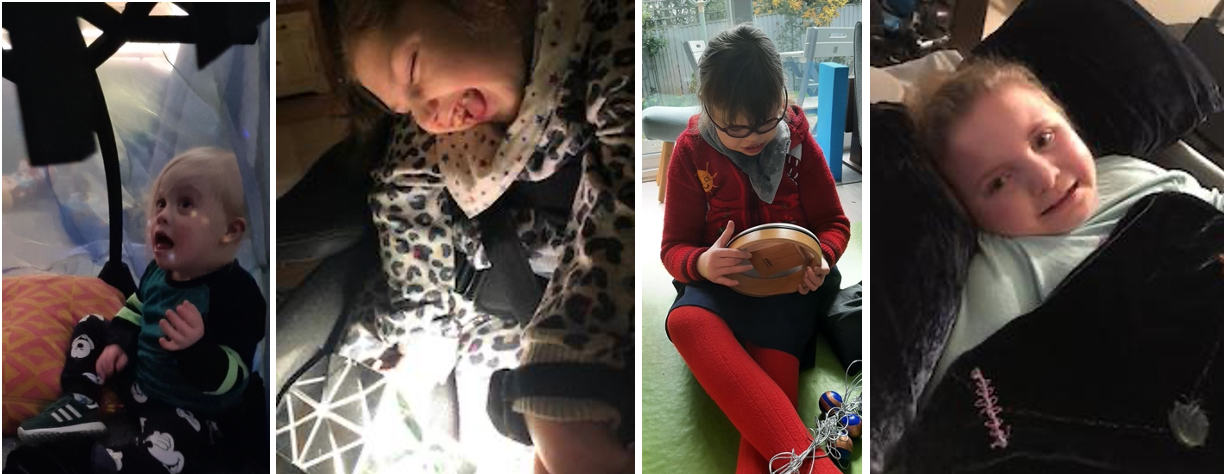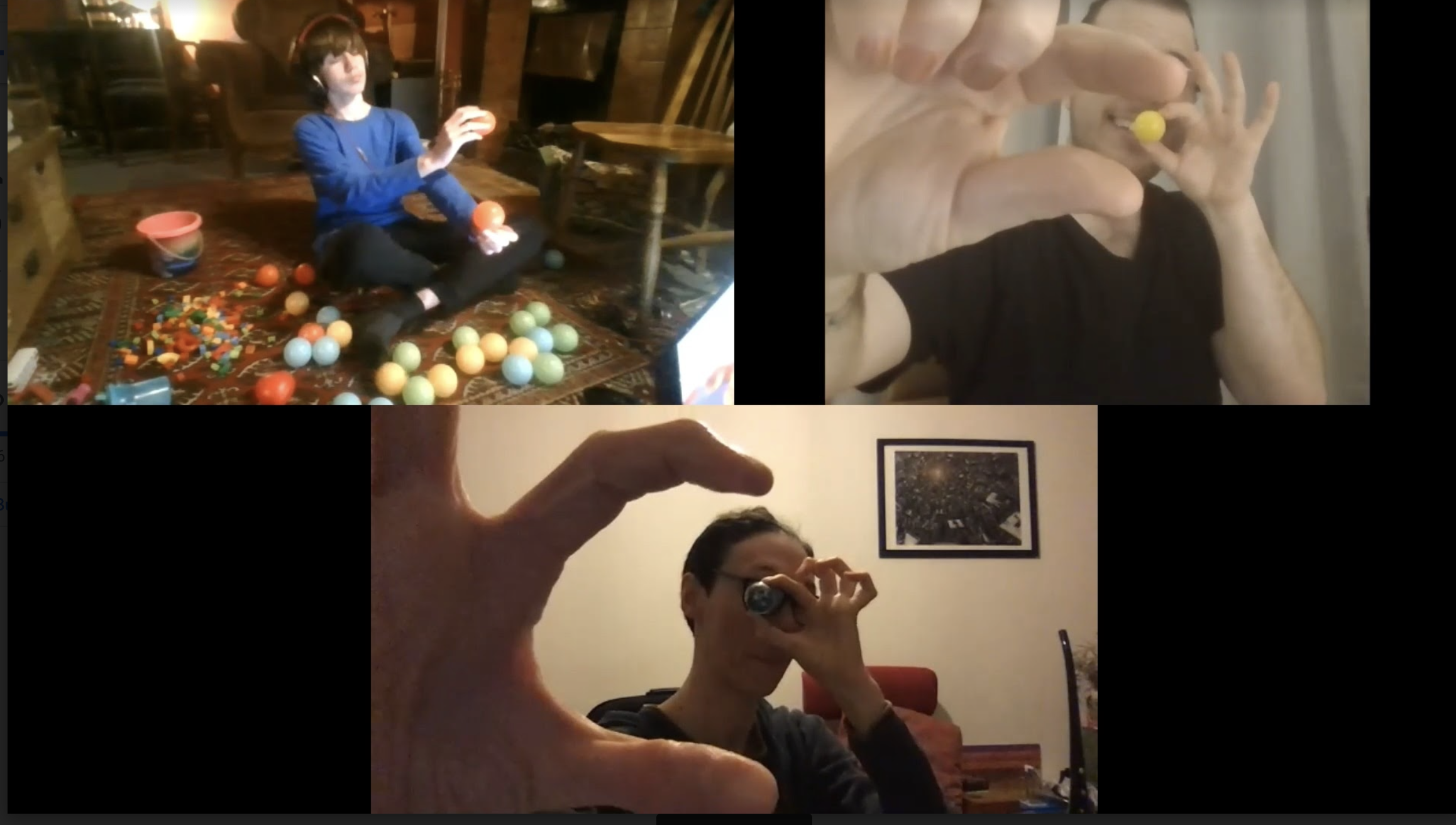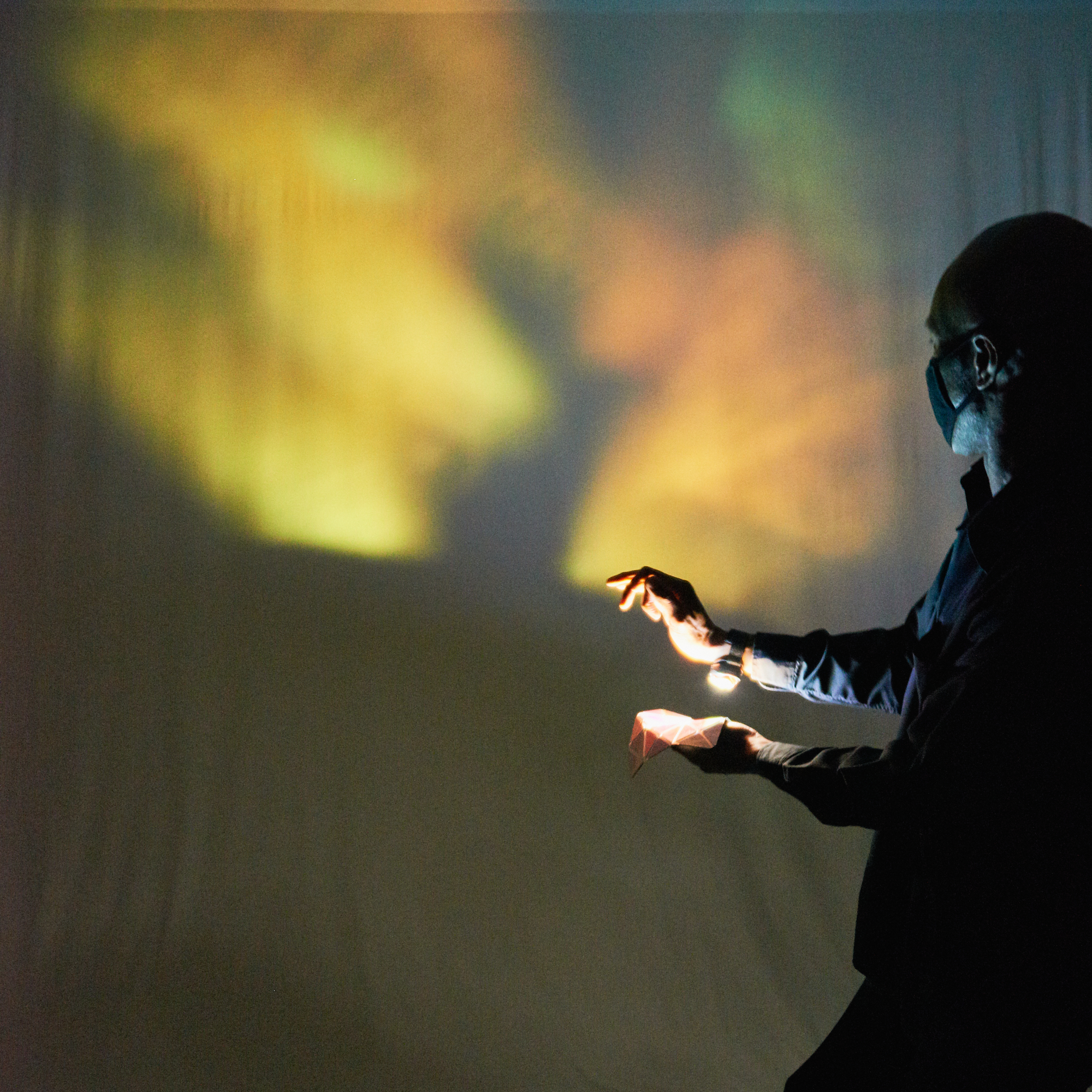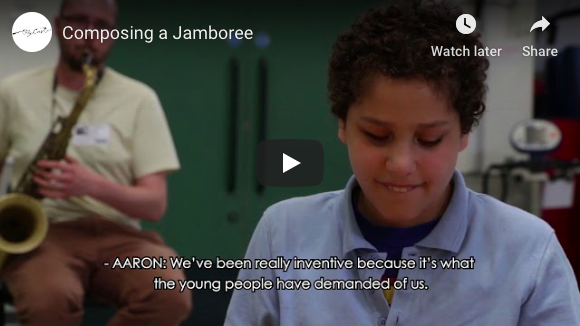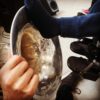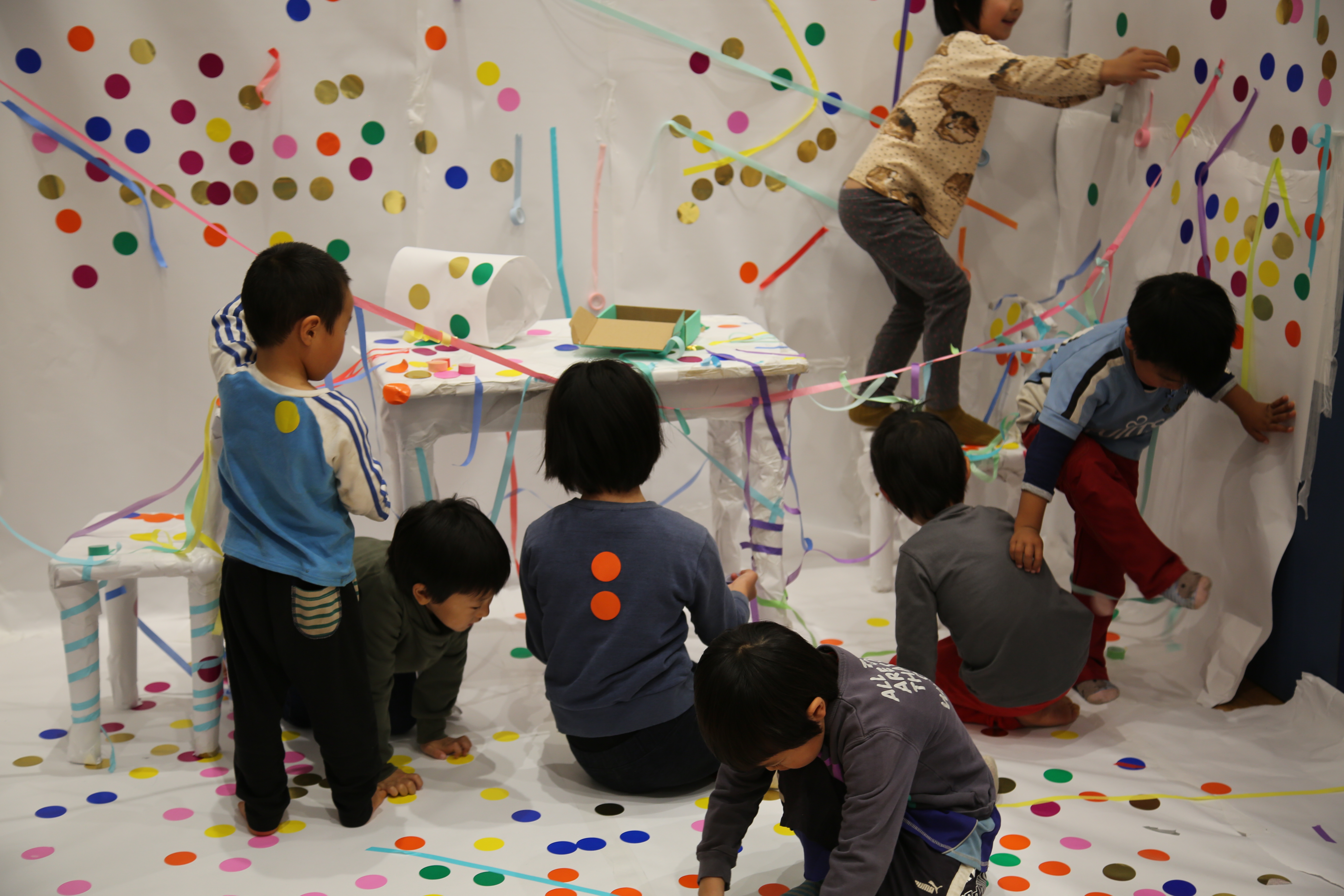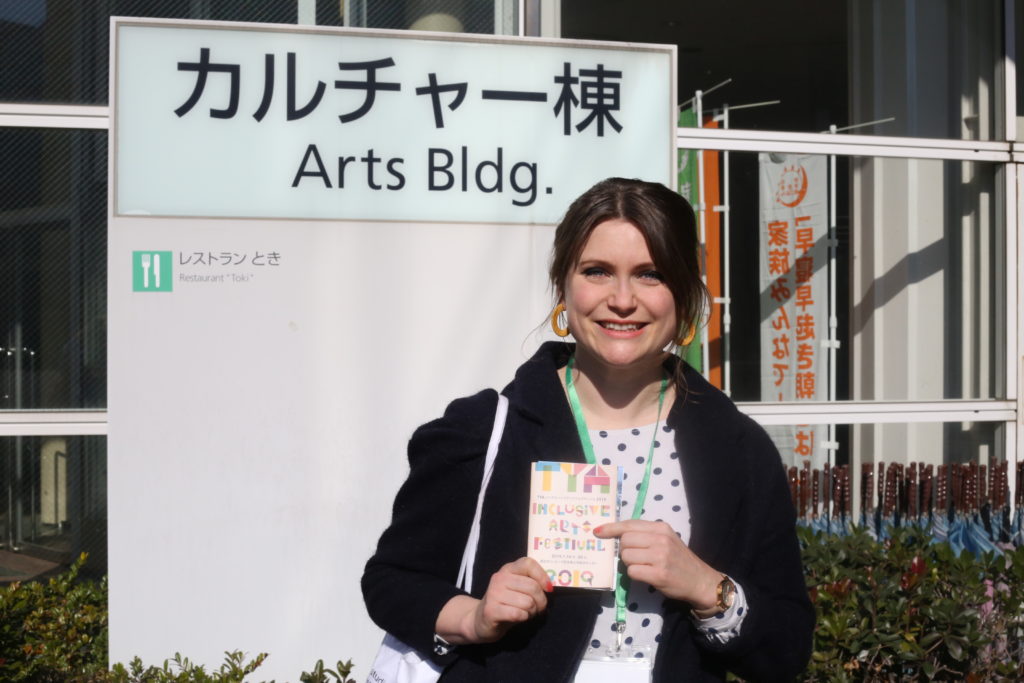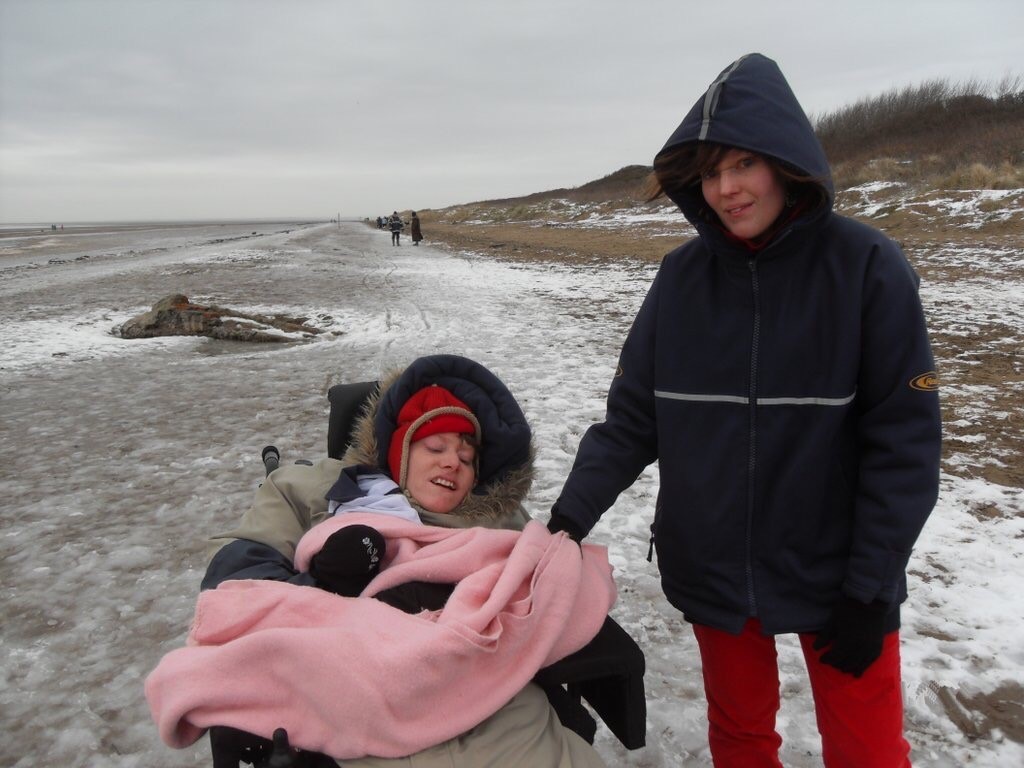
Oily Cart are collaborating with contemporary circus company Ockham’s Razor, known for their spectacular shows that blend circus and visual theatre. Last time we worked together, we created a show that took audiences up into the air!
For this show, we’re excited to explore the unexpected again, and play with positive risk and the kinaesthetic sense (the sense of movement). We spoke with Esther Veale about her sister Mary, and the value of risky experiences for people who experience the most barriers to access.
What does Positive Risk mean to you and your family?
When I think of positive risk I think, with my heart full of love and of pride, of my older sister. Mary was born in April 1983 with severe disabilities and lived a life full of colour and music and outdoor adventures. She lived far longer and more fully than the doctors at the time suggested she would. Very sadly, Mary died in 2017, just a month before turning 34, but through positive risk taking, Mary was able to wring every wonderful ounce out of life.

Can you tell us about some of Mary’s riskiest adventures?
Mary loved to cycle using a wheelchair tandem called a Duet: eyes wide and exhilarated at going fast downhill, then giggling as we would very slowly struggle, pedalling up the other side. My family would often paddle in canoes up and down a nearby canal in all seasons, and take walks in the beautiful Devonshire countryside with Mary using a wheelchair called a Rough Rider. With will and determination from Mary and family and friends supporting her, there were few places that we couldn’t get to. Moorland, muddy paths, pebbly beaches.
Being by the sea was really important. Not just being by it – it was important for Mary to be on it and in it! A local surf shop made an accessible wetsuit so she could stay warm enough to play in the water and bounce around in a dinghy in the waves.
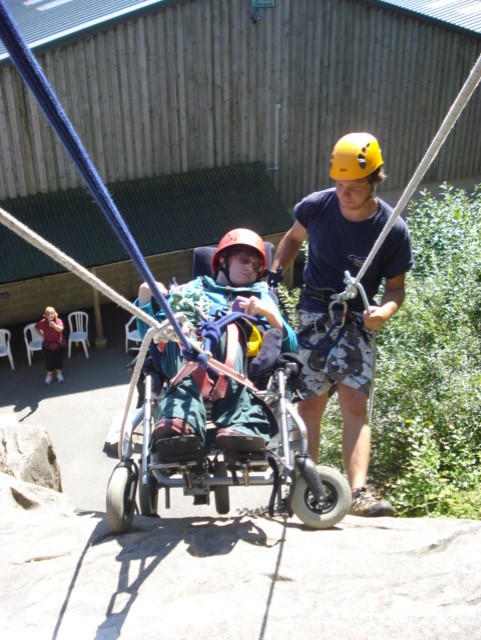
Mary loved drinking tea. She would communicate that she wanted a cup of tea by smacking her lips. One of my most striking memories of Mary is of her abseiling. Just before going over the edge, Mary communicated that she wanted a cup of tea, so a tea break was had partway down the abseil, 15 feet up in the air!
Later on in Mary’s life, her physical and medical needs meant a change of pace but positive risk taking was still important. It meant delaying the fitting of a gastrostomy tube until it was needed rather than as a precaution, so Mary could continue to enjoy tasting and swallowing those favoured cups of tea for that bit longer.
From your perspective what is the value of risk for people who experience many barriers to access?
I think there’s a good understanding that taking positive risks is vital for anyone’s wellbeing; we acknowledge that it is by taking risks that we achieve and grow.
If you don’t experience barriers to access, you can make these decisions about risk for yourself. If you are dependent on others for your basic needs to be met then you are somewhat reliant on others around you to manage the experiences that you have. As friends, family, teachers and supporters of people with physical, sensory, communication and cognitive differences it is our duty to listen deeply to what the people we love and care for are telling us about what they experience and what they enjoy and to provide more of these. We need to be brave, willing co-adventurers.
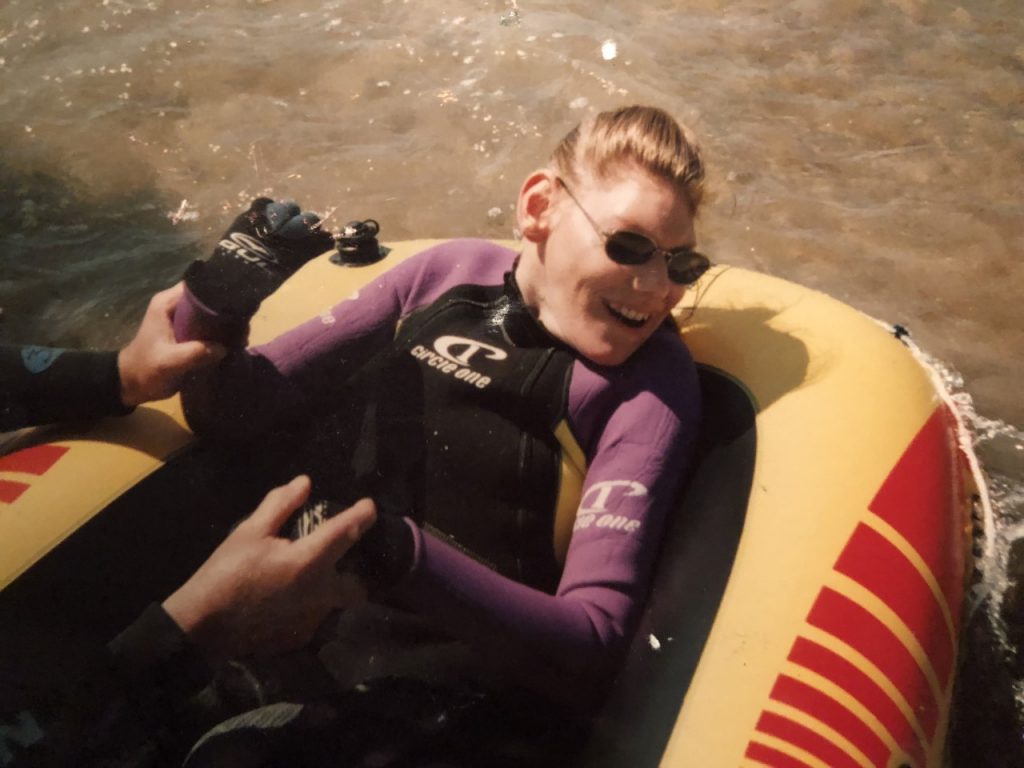
Why should theatre makers consider kinaesthetic sense (the sense of movement) and risk when they are making shows that are inclusive for everyone?
We all have a need to experience movement, be that hang gliding, or drumming fingers to a beat. When your bodily movements are restricted because of your physicality, there is a risk that this need to move is unmet, or that it happens in functional ways like being hoisted or pushed in a chair. We need to consider kinaesthetic experience for fun, creativity and expression too. It seems a natural fit with theatre: as an audience member, you want to go on a journey and be emotionally moved, and being physically moved can be an important part of that.
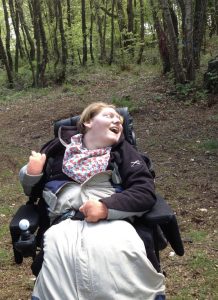
There is a powerful connection element to this too; sharing an experience of movement together can shorten the distance between people who understand and experience the world in very different ways, and invite communication without words. I felt very connected to Mary when we cycled together. We would both notice the differences in speed and respond with synchronicity through squeals and giggles! “Did you feel that lurch as we went over the bridge? Me too!” Here we are experiencing the same thing together in this very moment and isn’t it thrilling? For Mary, connection and communication could happen at their deepest through kinaesthetic experiences. Movement has the potential to be moving.
In honour of Mary’s life, the ‘Mary’s Beat’ fund has been created which awards grants to disabled people in Devon and Somerset so that they can access musical or outdoor adventures
Note: Oily Cart follows the social model of disability. We acknowledge that different people use different language, as reflected in this interview.

